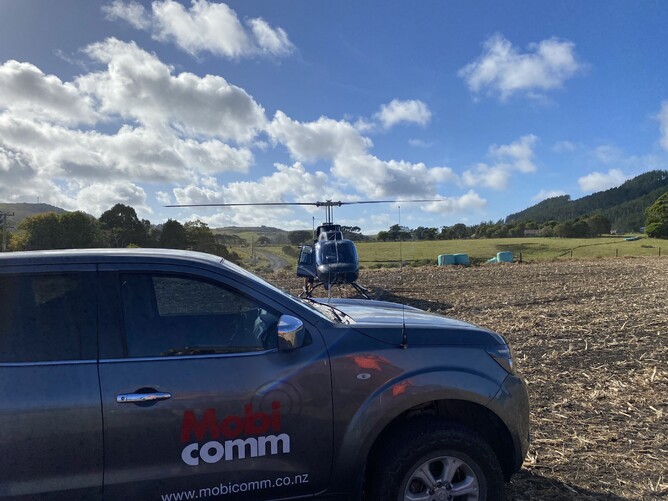Some words about Helicopters from Paul, one of our Northland technicians...
Helicopters are very much like a magic carpet. A good pilot will give you a smooth ride and there is not much to do except strap in and enjoy the view. Most trips are undertaken between 1500 and 2500 feet.
At this height you are well clear of ground obstacles and below most aircraft. Typically you get an amazing view into everyone's back yards, gardens and paddocks.
Pilots don't like going to look for hilltops (radio sites) when there is cloud about, because they have a natural aversion to inadvertently bumping into things.
Hint. Pick a good day for your trip.
Pilots also have a natural aversion to power lines particularly near landing or lifting zones.
Safety in the air is entirely up to the pilot and your safety harness.
The real safety issues occur on the ground because of the two sets of meat choppers whirring about.
The tail rotor is the worst because its closer to the ground and you will come reasonable close, when putting equipment in the rear compartment. The golden rule is "walk around the front of the helicopter" once the pilot gives you the OK.
The bubble at the front is OK, the dicer at the back will spoil your day.
Occasionally specific landing sites introduce extra hazards. Akatere is a good example. The edge of the landing zone is at the top of a rock bluff. Its not a site to absentmindedly wander about, because your next step could be rather big.
When you exit the helicopter at this site, keep your head down as you walk away. This is because the ground rises as you walk towards the hut putting your head within range of the overhead dicer. Obviously waving your hands (or indeed anything else) above your head is not a good idea.
One of the beauties of helicopters is there ability to sling load objects directly to your site. Take the pilots advice with respect to weight and balance. Secure everything. A lead acid battery dropping several hundred feet will spoil Todds bank balance. Discuss and plan each stage of the lift and set down.
Do everything calmly and deliberately. Don't run.
Only the pilot will be aboard during the lift, and he has limited visibility downward, upward and behind (towards the tail rotor).
In our case the pilot removed the door so he could lean outwards for a better view.
It also meant the pilot could set down the load close to the hut.
I like helicopters' because they have saved me a heap of leg work but like all useful tools, they have their risks and limitations.
Keep safe out there.
Remember the only dumb question, is the question you didn't ask. You don't know what you don't know.
If in any doubt, ask!

